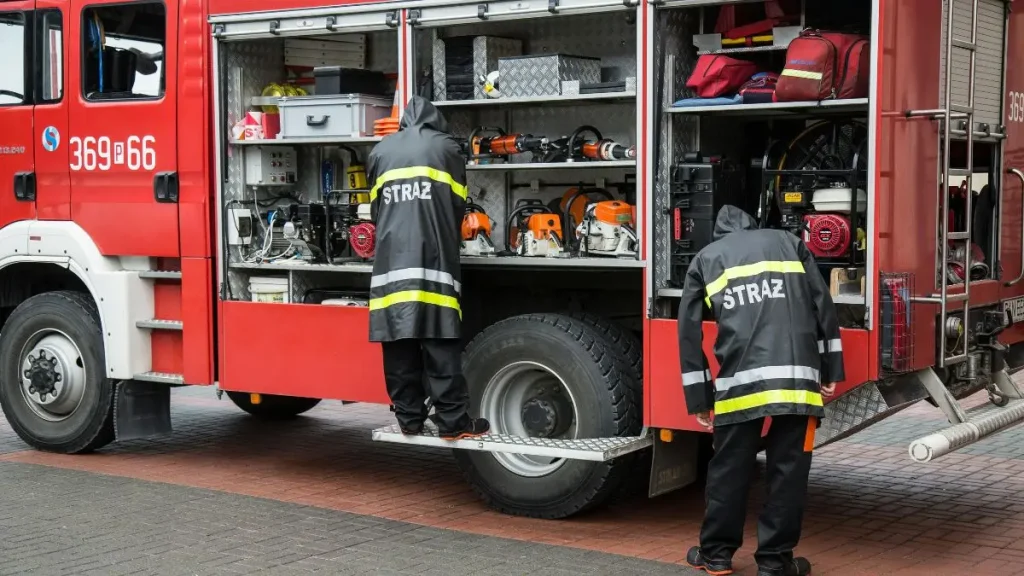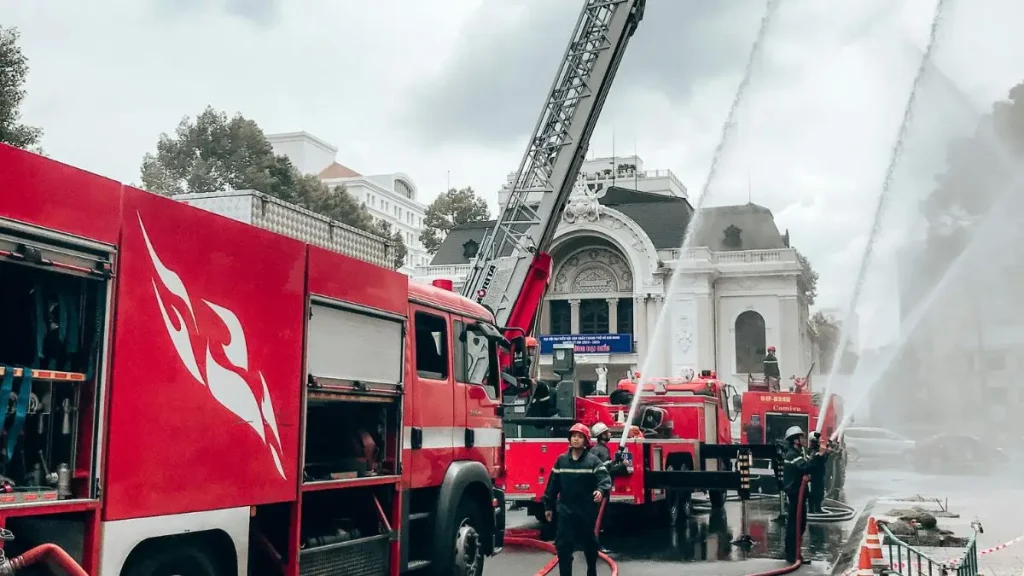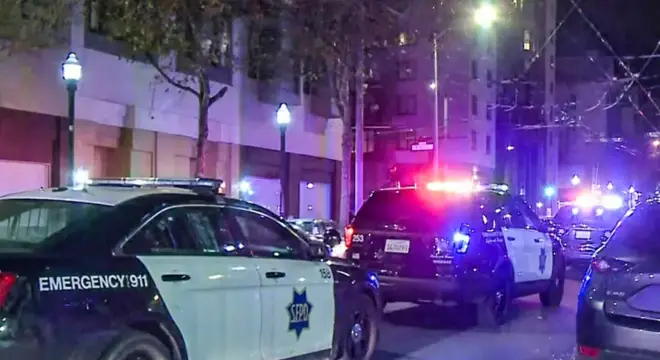Home in North Reading Catches Fire Twice, Officials Launch Investigation
I couldn’t believe it when I first read it — a house in North Reading caught fire not once, but twice in the same day.
The home was vacant, part of a training exercise for firefighters on Wednesday. It was supposed to be a controlled, safe drill — the kind of thing departments do to prepare for real emergencies. But less than an hour after the crews packed up, the same house was burning again.
Fire Chief Don Stats explained it simply: “Shortly after making sure the house is safe and not burning, we got a call about forty-five minutes later that it was involved.”
Imagine that — you finish a full training burn, clear the area, and then have to race back because your training site has turned into an actual emergency.
For the neighbors, it was just as surreal. Edward Baia, who lives nearby, said, “After a few minutes you could see all the fire trucks starting to arrive, one after another after another.” The second fire lit up the evening sky, and with the woods surrounding the property, residents worried it might spread fast.
If you’ve ever watched a fire crew in action, you know how precise they are — and how rare it is for a “safe” burn to flare back up. That’s exactly what makes this story worth paying attention to. It’s not just about a fire; it’s about how quickly control can slip, even for professionals.
Would you have felt safe living near that property after seeing flames rise twice in 24 hours?
Fire Training Turns Into a Real Emergency

The first blaze wasn’t supposed to be a tragedy — it was a planned fire training exercise, part of the North Reading Fire Department’s ongoing drills.
According to WHDH News, firefighters used the vacant house to practice real-world fire behavior and suppression techniques. Everything was under control, the flames were contained, and by around 6 p.m., the crews had cleared the area.
Then came the call no one expected.
Less than an hour later, the same house was on fire again. Fire Chief Don Stats recalled, “Shortly after making sure the house is safe and not burning, we got a call about forty-five minutes later that it was involved.”
You can almost feel the disbelief in his words — that moment when “training” turns into a real emergency.
The second fire wasn’t small either. Crews who had just cleaned their gear were suddenly back on scene, sirens cutting through the same quiet neighborhood.
It’s the kind of incident that reminds you how unpredictable fire really is — even when every precaution is in place.
Inside the Second Fire: Tougher Than It Looked
You’d think fighting the same fire twice would be easier. It wasn’t.
Even though the firefighters already knew the building’s layout, the second blaze took real effort to control. Hidden embers or trapped heat inside the walls might have re-ignited deep within the structure — a frustrating reality that even experienced crews face.
It’s a good reminder for all of us: a fire can look out, and still be alive underneath. That’s why professionals use thermal imaging cameras and extended monitoring before fully clearing a site. One overlooked hotspot can undo hours of hard work.
For the North Reading crew, this was no ordinary repeat call. It was a test of readiness — the kind that no amount of planning can perfectly predict.
A similar challenge was seen when a West Virginia home was destroyed after an early morning fire, where hidden embers made the response far tougher than expected.
Neighbors React: Shock, Fear, and Relief
When the first truck turned back onto the street, residents thought it might be a mistake. Then they saw the glow again.
“I looked out and couldn’t believe it,” said Edward Baia, a nearby resident. “Fire trucks just kept coming, one after another.” You can almost picture the disbelief — the same home that burned that morning, now lighting up the evening sky.
Many neighbors were worried about the woods surrounding the property. North Reading has plenty of dry brush and older trees, so the idea of sparks spreading hit close to home.
For families nearby, it wasn’t just curiosity — it was fear. The thought that something “controlled” could so easily spiral left people uneasy.
By night’s end, everyone felt relief when firefighters confirmed the flames hadn’t spread. But the worry lingered — if this could happen during training, what about a real emergency?
What would you have done if you saw flames twice in a single day? Drop your thoughts below — I’d love to hear how you’d react.
Why Did the Fire Reignite? What Experts Say

The honest answer: sometimes even the best precautions aren’t enough.
Fire investigators often find that smoldering debris, hidden wall cavities, or unvented heat pockets can reignite hours after a fire appears extinguished. According to data from the National Fire Protection Association (NFPA), embers trapped in insulation or flooring are a leading cause of secondary ignition — especially in older or vacant homes used for drills.
Controlled burns, like this one, are meant to be educational. But they also expose real risks — heat, structure weakness, and unpredictable air flow. That’s why departments typically conduct post-burn inspections using infrared cameras and keep a “fire watch” for several hours afterward.
If you’re a homeowner, here’s the takeaway: once a fire is “out,” it’s still not over. Whether it’s a backyard burn pit or a house fire, you need to check for lingering smoke, hot spots, or unusual odors — and never assume it’s safe just because it looks calm.
If you like staying updated on real incidents like this and quick home safety insights, there’s a WhatsApp channel where we share short, real-world lessons that help you stay prepared — no fluff, just what matters.
Lessons for the Community and Fire Departments Alike
For North Reading, this wasn’t just another local headline. It was a reality check.
The fire department handled it with professionalism — no injuries, quick containment, and full transparency. But it also opened up an important conversation: How do you prepare for danger inside a situation that was supposed to be safe?
For residents, it’s a reminder that fire safety doesn’t end when the flames die out. For firefighters, it’s proof that even experience comes with surprises.
If you live in a neighborhood where training exercises happen, keep an eye out. Report any smoke or sparks that linger longer than they should.
And if you’ve ever dealt with a small fire at home — electrical, kitchen, or garage — think about how you handled it. Did you double-check every corner before moving on?
Because sometimes, like North Reading just learned, the hardest fires to fight are the ones you thought were already over.
Few days ago, a fire in East Moline also showed how even a quick containment effort can mask hidden risks beneath the surface.
When a Drill Becomes a Real-World Lesson
What happened in North Reading isn’t just another “weird local news” story. It’s a lesson about how control can be an illusion — even when professionals are in charge.
The Fire Department did everything by the book. The home was vacant, the training was supervised, and the area was cleared. Yet one hidden ember changed everything.
That’s the reality of fire: it doesn’t care about plans, protocols, or experience. It teaches humility.
From a bigger lens, incidents like this help departments fine-tune their safety procedures. Expect North Reading FD and others across Massachusetts to review their post-training checks — especially the cooling and monitoring steps before officially closing a drill.
It’s not about blame; it’s about learning.
If you’ve ever had to “re-do” something you thought was finished — a project, a repair, or even a mistake at work — you already know the feeling. That same frustration and self-reflection is what every firefighter felt that evening.
The difference is, their second chance came with smoke and flashing lights.
The same kind of post-incident review helped after a Hartford multifamily home fire, leading to stronger inspection protocols for older buildings.
Takeaway: Every “controlled” risk deserves respect. The moment you let your guard down — whether it’s a candle at home or a planned burn — is the moment life can remind you who’s in charge.
Key Takeaways for Homeowners Everywhere
You don’t need to live in North Reading to learn from this. Here’s what stood out to me — and what you can actually do about it:
- A fire isn’t truly over until it’s cold: Even hours later, materials like insulation or flooring can reignite. If you’ve had any fire event, stay alert for smoke or heat.
- Check your surroundings: If you see firefighters training nearby or notice lingering smoke, don’t assume it’s “just practice.” Report anything unusual — they’d rather double-check than regret it later.
- Protect the edges of your home: Keep brush, woodpiles, or debris at least a few feet from exterior walls. In towns like North Reading with heavy tree lines, this can stop a small flame from becoming a wildfire.
- Learn from professionals: The NFPA, your local fire department, even insurance companies publish free fire-safety guides. Spend five minutes reading one — it’s a habit that can literally save your life.
At the end of the day, the North Reading fire isn’t just about a house that burned twice.
It’s about how fast control can slip, and how awareness — yours and mine — can make all the difference the next time something sparks.
If this happened on your street, what would you have done differently the second time?
If you follow stories like this, you might also want to explore how other communities have handled sudden house fires — visit our Home Incidents section for more real lessons and prevention tips.
Disclaimer: This article is based on publicly available news reports and official statements from local authorities. Details may evolve as investigations continue. Readers are encouraged to verify updates from the North Reading Fire Department or trusted news outlets.


